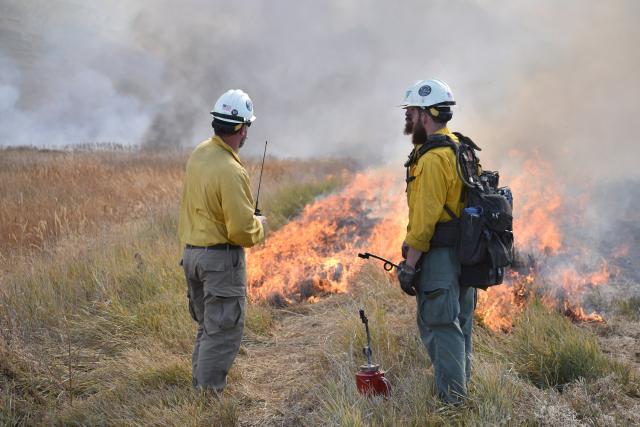BLM plans prescribed burn to benefit wildlife at Warner Wetlands
Organization:
BLM Office:
Media Contact:
LAKEVIEW, Ore. – The Bureau of Land Management (BLM) Lakeview District, in conjunction with the South Central Oregon Fire Management Partnership, is preparing to conduct a prescribed burn at Warner Wetlands, approximately five miles northeast of Plush, Oregon. Depending on weather and fuel moisture conditions, the prescribed burn could begin on February 6. Approximately 274 acres of BLM land will be treated to improve waterfowl habitat.
The prescribed burn’s primary objective is to remove decadent fuels and thick stands of cattails surrounding the wetlands. Fire is an effective method to remove cattails and dead fuels and improve habitat. Select areas within the wetlands are burned at five to ten-year intervals to improve habitat for the 150+ species of birds that use the area.
Smoke from the prescribed burn will be visible throughout the day of the burn, mostly during the warmest part of the day. With cooler temperatures in the evening, smoke may linger and accumulate in low lying areas. The BLM requests that the public avoid congregating on or near roadways, which can obstruct fire equipment and emergency vehicles supporting prescribed fire operations.
Formed thousands of years ago when gigantic faults in the earth’s crust shifted, today’s Warner Wetlands is a 40-mile chain of lakes separated by a unique series of bow-shaped dunes. Each spring and fall, thousands of birds visit the wetlands during their annual migrations.
For additional information, contact Matt Haskins, Prescribed Fire Specialist, at 541-947-6117 or [email protected].
The BLM manages about 245 million acres of public land located primarily in 12 western states, including Alaska, on behalf of the American people. The BLM also administers 700 million acres of sub-surface mineral estate throughout the nation. Our mission is to sustain the health, diversity, and productivity of America’s public lands for the use and enjoyment of present and future generations.

